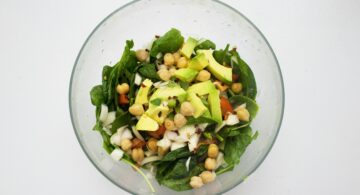Feed a Cold, Starve a Fever. Fact or Fiction?
“Feed a cold and starve a fever.”
Or…is it, “Starve a cold and feed a fever?”
I’m sure you’ve heard both versions of this old saying. However, which one is true? Does either one even have an ounce of validity?
Most historians credit Hippocrates with coining the saying, “Feed a cold and starve a fever.” During the middle ages, they believed that there were two kinds of illnesses:
The theory was based on the concept that eating fuels the body with heat. The warming body temperature then gets ride of a cold.
On the other hand, fasting (i.e. starving) limits food, causing the body to cool down because there is no “fuel for the furnace.” This was thought to lower a fever.
As time passed, the old saying was often flip flopped and became, “Starve a cold…feed a fever.” Said in either order, this saying is by far the most well-known old wives tales to date.
Most physicians today will tell you they totally disagree with both versions of this old wives tale. Starving your body when you are fighting any virus, whether a cold or flu, robs your body of nutrients.
However, many times your immune system dials back appetite during a cold, presumably to conserve energy and body heat for the big fight against viral invaders. In this instance, it’s probably a good idea to listen to your body and eat lightly to help your body heal. You really don’t want to chow down on a buffet when you’re sick. Eating light, nutritious food is a much better choice – especially when feeling a cold coming on.
But, what are the best things to put in your body to help fight off a cold? I believe that staying hydrated is of the most importance — even more important than eating food.
Putting the right fluids in our bodies can be doubly effective by:
- Keeping the body hydrated.
And
- Providing the vitamins, minerals and nutrients it needs to fight that nasty cold virus.
Below are what I believe to be are the 3 best liquids to drink to help your body combat a cold.
#1. Coconut Water
I immediately fell in love with coconut water when I was introduced to it around 4 years ago. This refreshing liquid is packed full of:
- Vitamins
- Minerals
- Amino acids
- And electrolytes
Coconut water is quickly becoming a favorite of athletes. Because of its significant amounts of potassium, coconut water is a much better option than sports drinks like Gatorade.
Potassium is extremely important for both our cellular and electrical system in our bodies.
- Because potassium is an electrolyte, coconut water helps regular blood pressure.
- Potassium also regulates the water balance in the body, which is very important when trying to avoid dehydration.
Any physician will tell you that staying hydrated is of primary importance when battling a cold. Coconut water is your best choice for maintaining hydration.
Aside from the all-important-potassium, coconut water is also a great source of:
- Magnesium
- Sodium
- Calcium
- Manganese
These minerals are all very important electrolytes in the body.
But, this isn’t all!
Coconut water contains something called cytokinins. These are classified as phytohormones, which have been found in research to be:
- Anti-aging
- Anti-carcinogenic
- And anti-thrombotic
This is just another reason to make coconut water part of your diet!
Commercial coconut water can get pricey, but I’ve just run into a great way to get coconut water for a much lower price.
They now sell coconut water powder! By evaporating the water, the nutrients are kept intact. Each bag of this dehydrated coconut water is equivalent to 16 fresh coconuts! It is also extremely cost efficient and convenient! Keep the powder on hand and mix it into water or even add it to your daily smoothie!
And don’t forget about your kids! You can easily sneak coconut water or coconut powder into your children’s juice! Sometimes it can be difficult to get adequate vitamins and minerals in your children’s diet. Coconut water is a great way to incorporate more nutrients into their growing bodies. And it should be a no-brainer to have your children sip on coconut water when battling a cold!
#2 Fresh Pressed Juice
If you don’t have a juicer, I highly recommend purchasing one. Don’t worry…I’m not expecting you to become a juice fanatic. Juicing can become expensive and juicers can be pain to clean! However, if you have the money and time, than juice away! Fresh, raw juice is amazing for your health!
I consider myself an intermediate juicer. Whenever I feel a bit out of whack, when I’m starting to feel sick, or when I really haven’t been eating well, I whip out my juicer.
Fresh juice is one of the best ways to deliver fresh, raw, vitamins and minerals straight into your body! Because there is minimal digestion required, you are able to quickly and efficiently absorb valuable nutrition from the juice. This makes raw juice a great remedy for the common cold by giving your immune system a boost.
Here are some fruits and veggies high in immune boosting vitamins A and C:
- Carrots
- Apples
- Kale
- Orange
- Lemon
Ginger is also a great for juicing and has been used for centuries in Asia for treating many ailments. It has been proven to be an effective remedy for the common cold with its anti-inflammatory properties and gut-soothing effects.
Ginger fights viruses from spreading in the body, warming the body with its “kick.” Just a quick note: a little ginger goes a long way. A bold dose of ginger is sure to have you a warm ginger “buzz.” Start out slow when juicing ginger or the spiciness might knock your socks off!
If you’re feeling adventurous, then you can also add garlic to your juice, as well. Garlic is well known for its anti-viral components. If you can’t stomach the taste, swallow some garlic pills with your fresh juice to boost your immune system.
My favorite cold busting juice combo is:
- 2 granny smith apples
- 1 handful of kale
- 2 large carrots
- 1 lemon or lime
- 1 1 inch sliver of ginger
If you aren’t sure about investing in a juicer, then visit your local health food store and sample their fresh juices. Most health food stores will let you create your own combinations of fruits and vegetables. This is a fun way to try different flavors before taking the plunge and investing in your own juicer!
Just don’t buy the manufactured juice! These juices have been pasteurized and most of the nutrients have been killed by heat. They are also primarily fruit juices and contain a very high sugar content. Fresh, raw juice is always best!
Fermented Drinks
One of keys to boosting the immune system is to focus on gut health. Did you know that 60-70% of your immunity lies in the intestinal tract!? Boosting beneficial bacteria in the gut through fermented drinks is a fantastic way to combat a cold!
Fermented drinks have been consumed for centuries! I’m not referring to wine or beer, although alcoholic drinks are fermented. The drinks I am referring to are fermented by symbiotic cultures. These cultures add healthy bacteria, also known as probiotics, to the drink turning it into a wonderful health beverage!
In the past you would have to brew these drinks yourself in order to consume them. However, they’ve recently gained enough popularity that you can now easily purchase them at health food and grocery stores!
The two most popular types of fermented beverages are kombucha and kefir water.
Kombucha dates back nearly 2000 years to China. It is made by fermenting tea and sugar with a culture called a scoby. It has a slightly tart, vinegar-like taste and is slightly fizzy.
Kombucha is truly a digestive tonic. It colonizes the guts with friendly bacteria. It also contains a specific probiotic called Saccharomyces boulardii. This friendly bacteria not only kills candida, but is the best defense against many of the toxic bacteria that cause food poisoning.
Kombucha also opens up detoxification pathways in the liver. Having a clean, well functioning liver is very important for a strong immune system. Kombucha also contains acids and enzymes which benefit gut health as well.
Kefir water isn’t tart, but still packs the fizziness of a soda. It is made by adding symbiotic kefir grains to sugar water. It contains billions of beneficial bacteria strains and yeasts.
I prefer the taste of kefir water and have been making it myself for a couple years. My kids love it and call it their “pop.” You can watch my how-to video on making kefir water HERE.
The probiotics in these fermented drinks are such powerful little scrub brushes to the colon and deliver powerful anti-virus abilities, that it astonishes me that everybody doesn’t know about them. Over and over again I have seen kombucha and water kefir knock out colds.
Homemade Soup
Of course, there’s nothing wrong with going back to basics and doing what your mom probably advised when you were getting sick: Get plenty of rest and have a bowl of homemade chicken soup.
Homemade chicken soup has been proven in actual studies to reduce cold symptoms! (1)
Making chicken or even beef bone soup is an excellent way to get both liquids and nutrition into the body. I specify homemade, because canned soup just will not do. Most canned soups contain a plethora of artificial ingredients in the form of flavor enhancers like MSG.
Make your soup with bones in the broth. Of course you can skim them out later. However, the bones add minerals, soothing gelatin, and anti-inflammatory nutrients to your soup. This is important if you want the soup to really work for fighting your cold.
Add as many vegetables as you can muster. The more you add, the more vitamins and minerals your soup will contain. Some nutritional and cold-fighting veggies to add are:
- Onion
- Garlic
- Carrots
- Spinach
- Peas
- Cabbage
I personally recommend making up a large batch of soup in advance. Put some away in the freezer so you’re not attempting to cook while you’re sick. Of course, it’s always better when you have a kind neighbor or friend bring you over a batch when you’re under the weather!
Here’s an adaptation of the famous chicken soup in Sally Fallon’s Nourishing Tradition’s cookbook — a book of recipes that is definitely worth its purchased price in gold. It is packed with nourishing recipes!
Cold Curing Chicken Soup
Items you’ll need:
- 1 Whole Organic Chicken (the best is organic or pasture-raised)
- 1-2 T. Apple Cider Vinegar
- 1 Lg. Onion
- 2 Carrots coarsely chopped
- 2-3 Celery Stalks coarsely chopped
- 4 Qt. Cold Water (filtered is best)
Directions:
- Roast the chicken in the oven at 350-degrees until it is cooked (approximately 1-1/12 hours). Once the chicken is cooled then pull the meat from the carcass. Freeze the meat in 1 C. portions to later be added to soup. { At this point, I usually freeze the carcass and any gizzards}
- Add the chicken carcass into a large slow cooker and cover with water. Add in the vinegar and let sit for 1 hour. This will begin the process of leaching out the minerals from the chicken.
- Add in the vegetables and turn the slow cooker to high. A small amount of foam will form on the surface ~ skim this off and discard. Turn the slow cooker to low and cook for 12-24 hours.
- Once the broth is finished, remove and discard the carcass and vegetables.
- Let the broth cool and store in 2 C. amounts. Freeze for long term storage.
- Optional: If you prefer a clearer broth then strain the through a cheesecloth when adding to storage container.
- When ready to serve chicken soup, thaw frozen chicken meat and broth. Add your preferred vegetables. Cook until desired tenderness and add the chicken.
Hydrate a Cold – Hydrate a Fever
Don’t be afraid to go a day or two consuming primarily these nutrient-dense liquids. Listen to your body. If you’re not hungry, it’s typically for a reason. However, if you are diabetic or have another serious health condition, please check with your physician first before limiting your diet.
Although the old wives tale may not be the best choice in eliminating your ailments, I recommend this instead:
Hydrate a cold and hydrate a fever with as many nutrient-dense liquids as possible. Try coconut water, fresh pressed juice, kombucha, water kefir or chicken soup and feel the wonder behind these healing drinks to reverse your cold!
Your body will be able to easily absorb and assimilate the vitamins and minerals, while it works hard at battling that nasty virus.
Don’t go unprepared! Be ready this cold season to “drown” that cold with liquid nutrition.
More Articles You Might Enjoy:
- Make Your Water More Nutritious and Delicious
- Healing Lupus Diet
- Dr. Saunders’ Easy DETOX Program – For Life!
(1) http://www.ncbi.nlm.nih.gov/pubmed/11035691



























